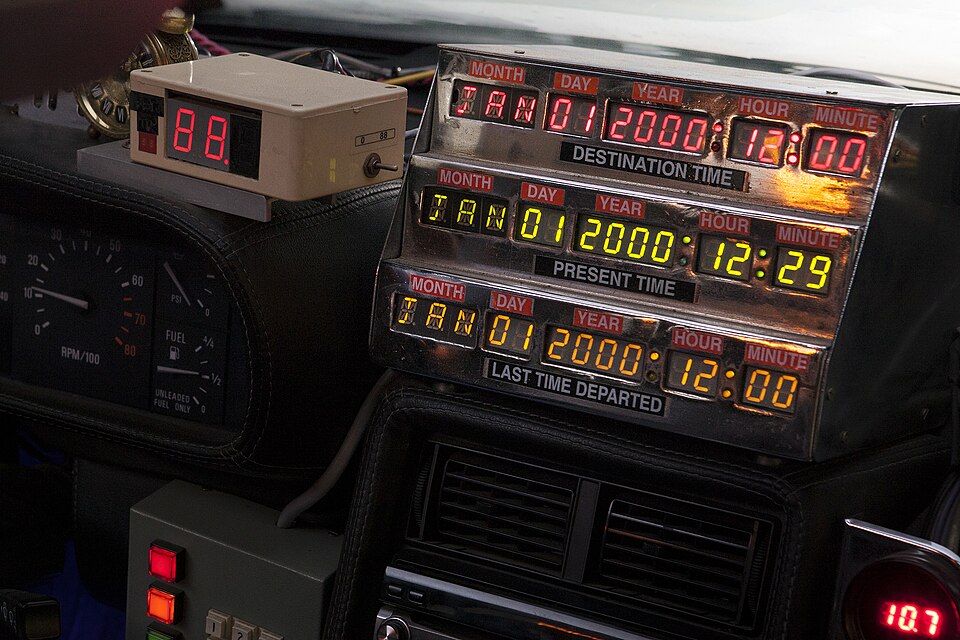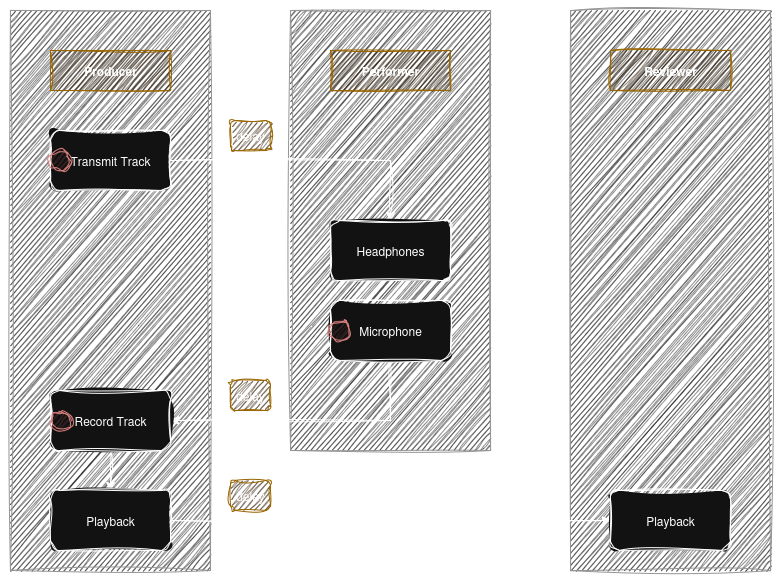
How SyncDNA corrects latency for flawless remote collaboration
It sounds too good to be true, doesn't it? We promise perfect synchronization, frame and sample accuracy, low-latency realtime conferencing, and remote recording and review, but how on earth is that possible? We have, multiple times, recorded "jams" between musicians in Canada and Germany; doesn't that break the laws of physics?
Well, no. The trick is, we don't do all of those things at the same time, and we use very different approaches for each task depending on what the requirements are. But together, it just seems magic. This is the fundamental compromise that makes our system work, trading off latency, fidelity, and data transfer speed to seamlessly move audio and film over the Internet.
But first, the tyranny of light speed
Our Universe has one very inconvenient problem: it has an unbreakable speed limit. While it may seem instant, light takes quite a while to get around, traveling at just under 300,000 KM per second. For example, it takes about 8.4 minutes for light to reach us here on Earth from the Sun. And if you have the misfortune of reading this from Mars, it's as high as 13 minutes. In the worst case scenario, a round trip ping between Earth and Mars at light speed could be over 30 minutes!
This seems largely irrelevant for people that still live on planet Earth, but it does effect us too. While the speed of light is quick in a vacuum, it's much lower in optical fibre, by between 30 and 50 per cent. And this difference is exploited in the real world, there are several radio relay systems for facilitating high frequency trading in commodities markets faster than trans-continental or trans-atlantic cables.
In absolutely ideal circumstances, the latency between New York and Paris is about 20 milliseconds (ms), but once fibre optic cables are involved that increases to about 27 ms.
But it gets worse, because the Internet is imperfect.
The router problem
If data transfer was as simple as moving blobs around at light speed, our lives would be a lot easier, but unfortunately the devious device known as the "router" exists. The distance between my desktop computer and my server in a datacenter across town is about 5 KM (3.1 miles) as the crow flies. At light speed, that round trip time should take about 0.033 ms. But when the actual network latency is measured, it takes between 18 and 24 ms. Why is it 600 times slower?
Each time my "packets" of data move from one network to another, they have to be examined by a specialized computer, then placed on another fibre line, each of these transitions taking a bit of time. Some of the computers have very complicated lookups to determine which "route" to take. Others perform "traffic shaping" to prioritize or hold back certain types of traffic. Others are simply slow. I'm not even certain this is all taking place within my city; it's entirely possible this simple message is traveling much further than it would really need to. It's very common for traffic to be diverted far away to an Internet Exchange when going between different service providers.
That is all to say, the Internet is very sub-optimal for latency. It was never really designed for that purpose, and everything we do to try and "beat the clock" runs up against fundamental problems with its architecture, not to mention the speed of light.
The human problem
Things get even worse for us when we consider the human itself. We're extremely sensitive to latency. The commonly cited tolerance is about 20 ms, meaning that two performers can only really sit about 7 metres (23 feet) apart without starting to experience synchronization issues, in part facilitating the need for a Conductor in a large orchestra.
Years ago, players of the Guitar Hero video game grappled with input latency differences between older "tube" televisions and the newer flat-screen types making the music-based game unplayable. This is an issue most gamers know about, with highly competitive players often trading display fidelity for the lowest latency possible.
What this means is, it becomes increasingly difficult and frustrating to perform or listen with good synchronization over the Internet, even at seemingly close distance. People have tried for years to solve this problem by chasing latency, but the fundamental limitations of our technology and constraints imposed by our universe itself mean it will never really work.
SyncDNA - The solution
Since we can't really time travel, at least not yet, we have to get clever. Instead of trying to beat latency, we instead use it to our advantage. Here's how:
When playing media or recording a remote performer, our system will apply a defined delay at each "hop" on the media's journey between devices. Then, when subsequent devices receive that media, they compensate and correct for that delay automatically to re-align all of the media with high precision. As long as this delay is more than the network latency, things continue to operate smoothly.
All the devices involved also need to know the precise "universal" time, which they derive from precise measurements taken by our system of their connections.
The key part of our solution is that since performers, producers, and reviewers are in physically separate spaces, "now" isn't a single universal instant, it's a moving target that we can manipulate by changing when "now" is. As long as we transfer the media fast enough during the delay periods, media always arrives before "now".
Here's an example, with a simple recording session:
- A producer sends a backing track to a performer - SyncDNA adds a slight delay to the outbound feed
- The performer receives the track early, and waits the rest of the delay period to play it
- The performer plays their instrument. The SyncDNA app records it, and applies another delay period while sending back to the producer
- The producer now receives the recording back from the performer, two delay intervals later

To the producer, it's like the performer is right in front of them, other than the small pause after starting to record. Because we separate these events temporally, we have enough time to send studio-quality audio without any interruptions or glitches, even on imperfect connections.
This scales up as well - each performer can be "stacked" on top of others down the line, building up a full ensemble before the finished track is delivered back to the producer, making it possible to record a band of several performers that aren't even on the same continent.
And when the take is finished, everybody is back to "real time", (or close to it) using advanced video conferencing technology. The fidelity of the live stream isn't high enough to record, but it's great for discussion and collaboration.
Using this technique, we can record music, capture podcasts, dub ADR, review film and television, or any other number of use cases that our brilliant users have found. There's no limit to what can be done when time can be manipulated in this way.
Want to try it? Start a free trial and start time traveling today!
Image credit: https://commons.wikimedia.org/wiki/File:TeamTimeCar.com-BTTF_DeLorean_Time_Machine-OtoGodfrey.com-JMortonPhoto.com-04.jpg (Oto Godfrey and Justin Morton, CC-BY-SA)